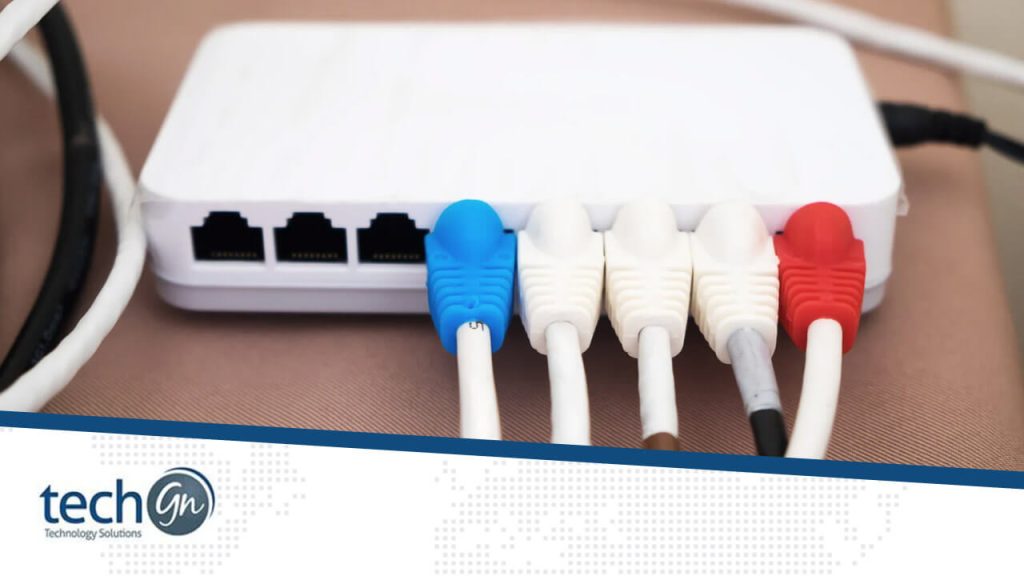Your home router is the heart of your internet connection. It links all your devices—phones, laptops, smart TVs, cameras, and more—to the outside world. But if it’s not adequately protected, it can become a significant security risk. Hackers often target routers because they can gain access to everything on your network once they break in.
In this TechGN guide, we’ll walk you through how to protect your router from hackers and explain why it’s crucial for your digital safety. Whether you’re tech-savvy or a beginner, these simple yet powerful tips will help secure your Wi-Fi network and keep cyber threats at bay.
Why Router Security Is So Important
When most people think about online security, they focus on antivirus software, strong passwords, or avoiding phishing scams. While those are important, securing your router is one of the most critical steps in protecting your home network.
What Can Happen If a Router Gets Hacked?
- Hackers can steal personal data, including emails, files, and banking info
- Malicious software can be installed on connected devices
- Internet activity can be tracked or redirected to fake websites (DNS hijacking)
- Devices like smart speakers or security cameras can be taken over
- Bandwidth can be stolen and used for criminal activity
- Your router can become part of a botnet used to attack other websites
This is why knowing how to secure your home Wi-Fi router is not optional—it’s essential.
Step-by-Step: How to Protect Your Router from Hackers
Let’s dive into practical and straightforward steps you can take right now to enhance the security of your router.
1. Change the Default Router Login Credentials
When you first set up your router, it likely came with a default administrator username and password (such as “admin/admin” or “admin/password”). These are publicly known and easily guessed by hackers.
What to do:
- Log in to your router’s admin panel (usually at 192.168.1.1 or 192.168.0.1)
- Change the admin username and set a strong password
- Use a mix of letters, numbers, and symbols
TechGN Tip: Don’t confuse this with your Wi-Fi password—they’re different.
2. Update Your Router’s Firmware
Router manufacturers release firmware updates to patch security holes. Many users fail to update their routers, leaving them vulnerable to known attacks.
What to do:
- Log in to your router dashboard
- Look for a Firmware Update or Software Update section
- Enable auto-updates if available, or check manually every few months
Outdated firmware is one of the most common weaknesses hackers exploit.
3. Use WPA3 or WPA2 Encryption
Encryption protects your network by scrambling the data sent between devices and the router.
What to do:
- Go to your router’s Wireless Security settings
- Select WPA3 (the latest standard) if available
- If not, choose WPA2-AES (avoid WEP—it’s outdated and insecure)
WPA3 offers better protection against brute-force attacks and snooping.
4. Create a Strong Wi-Fi Password
A weak Wi-Fi password is like leaving your front door unlocked.
Password tips:
- Use at least 12 characters
- Include uppercase, lowercase, numbers, and symbols
- Avoid using names, addresses, or birthdates
Your Wi-Fi password should be as strong as your banking password.
5. Disable Remote Management (Unless Needed)
Some routers allow you to access settings remotely over the internet. While convenient, it’s also risky.
What to do:
- In the router dashboard, disable Remote Management, also called Remote Access, WAN Management, or Web Access from WAN
- Only enable it if you need it and know how to secure it with a VPN.
Hackers often scan for routers with remote management open—it’s a common target.
6. Change the Default Network Name (SSID)
Routers often come with default names, such as “TP-Link123” or “Netgear987”. These names can reveal your router’s make and model, making it easier to exploit.
What to do:
- Change your SSID to something unique (but not personal)
- Avoid using your name, address, or anything that gives away private details
A custom SSID makes you less of a target.
7. Hide Your SSID (Optional)
You can also choose to hide your Wi-Fi network name so it won’t appear in public lists.
Keep in mind:
- You’ll have to manually connect each device by entering the SSID
- It adds a small security layer, but it isn’t foolproof—skilled hackers can still find it
Use this as an added precaution, not your primary defense.
8. Set Up a Guest Network
If friends or visitors regularly use your Wi-Fi, don’t give them access to your leading network.
What to do:
- Create a separate Guest Network through your router settings
- Use a different password and turn off sharing between devices
This keeps your smart home devices and personal files separate from those of guests.
9. Reboot Your Router Regularly
Believe it or not, rebooting your router can help clear out malware or unwanted connections.
Recommended:
- Unplug your router, wait 30 seconds, and plug it back in
- Do this once a week or at least once a month
Some newer routers offer scheduled reboots in the settings.
10. Consider Using a VPN at the Router Level
For advanced users, setting up a VPN (Virtual Private Network) on your router adds a powerful layer of security.
Benefits:
- Encrypts all traffic from your home
- Protects smart devices that can’t run VPNs
- Masks your IP address from hackers and ISPs
Note: Not all routers support VPNs. Check compatibility before setting it up.
Common Myths About Router Security
Let’s bust a few myths that can lead to poor decisions:
- Myth: “I live in a quiet neighborhood—no one would hack me.”
→ Hackers scan the internet globally; your location doesn’t matter. - Myth: “If my Wi-Fi works fine, it must be secure.”
→ Performance doesn’t reflect security. You may never know you’re being watched.
Myth: “Only big businesses need to worry about router attacks.”
→ Home routers are common targets because they’re easier to breach.
Bonus Tip: Use Security Tools to Scan Your Network
Several tools can check if your network is vulnerable:
- Fing (mobile app) – Scans devices on your network
- Router Checker by F-Secure – Checks for DNS hijacking
- GRC ShieldsUP! – Scans for open ports
Regular scans help detect suspicious activity early.
Your home router controls who gets access to your digital world. By following these steps, you can prevent hackers, protect your devices, and safeguard your private information. Router security isn’t just for tech pros—it’s for anyone who uses the internet.
At TechGN, we’re committed to helping you stay safe and competent online. A few simple changes today can save you from major headaches tomorrow.
Need help updating your router or securing your home network? Contact TechGN for expert support and step-by-step help.
Reviews
Tailoring Solutions


